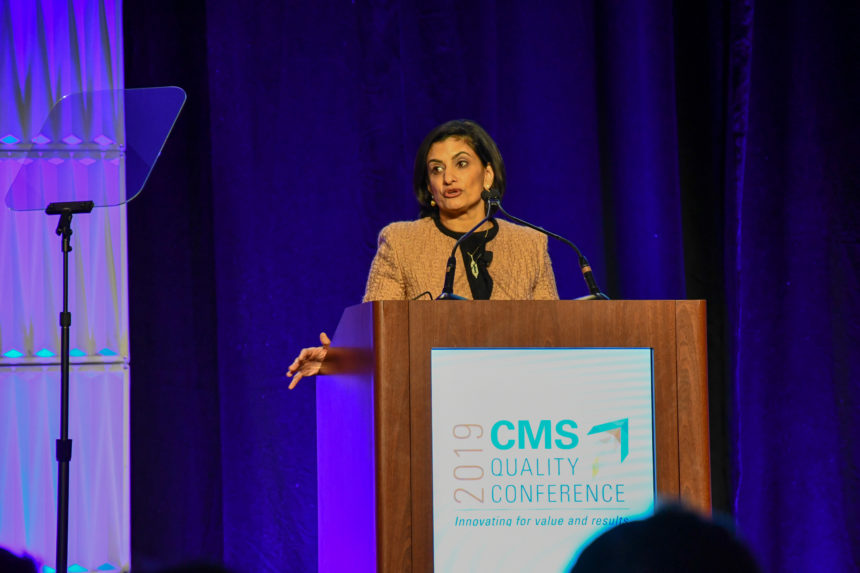
In a fiery speech Tuesday, the head of the Centers for Medicare & Medicaid Services top official issued a “call to action” to providers and said the healthcare industry’s status quo is no longer acceptable.
Administrator Seema Verma highlighted the industry’s new Patient-Driven Payment Model — along with similar reimbursement changes for home health and labs — as ways to transform the payment system, but said further reform is needed. She noted during the CMS Quality Conference that these are first steps to move SNFs and other providers toward a more “outcomes-based system.”
Only 14% of all healthcare providers are in value-based agreements, which needs to “speed up,” she said.
“We will go further, as our system needs to realign payment incentives to pay for the results we desire,” she told attendees in Baltimore. “When providers have responsibility for managing a budget and their reimbursement is tied to the results they produce, they will be incentivized to find innovative ways to keep people healthy and lower costs.”
Previewing what’s on the horizon, she pointed to CMS’ announcement this week that it’s launched a new app to allow beneficiaries to more easily determine what Medicare covers. Verma said eMedicare will eventually allow beneficiaries to compare quality ratings “across all types of care settings, instead of having to look across 10 different sites that exist today.”
The CMS chief also lambasted overly burdensome measurements in the industry. Officials are developing a “next generation set of measures” that are more dynamic and can allow patients to easily identify high-value providers.
“I can tell you that creating hundreds of measures — which evaluate processes not outcomes, which create complex reporting requirements that drive up costs — is not the way,” she said. “Those are not the results we want, it’s not helpful to patients and it’s not helpful to providers.”
Verma added that, as CMS moves toward more innovative payment models, it also must adopt better strategies to root out fraud. She said her agency is working on advanced data analytics tools to help review more claims and better address what it’s found to be high-fraud areas.
“The reality is that the old-fashioned way of approaching program integrity has only allowed us to review less than two-tenths of a percent of the over 1 billion claims that Medicare processes every year,” she said. “And as we move towards innovative payment models, we need to adopt a modern, smarter program integrity strategy.”




